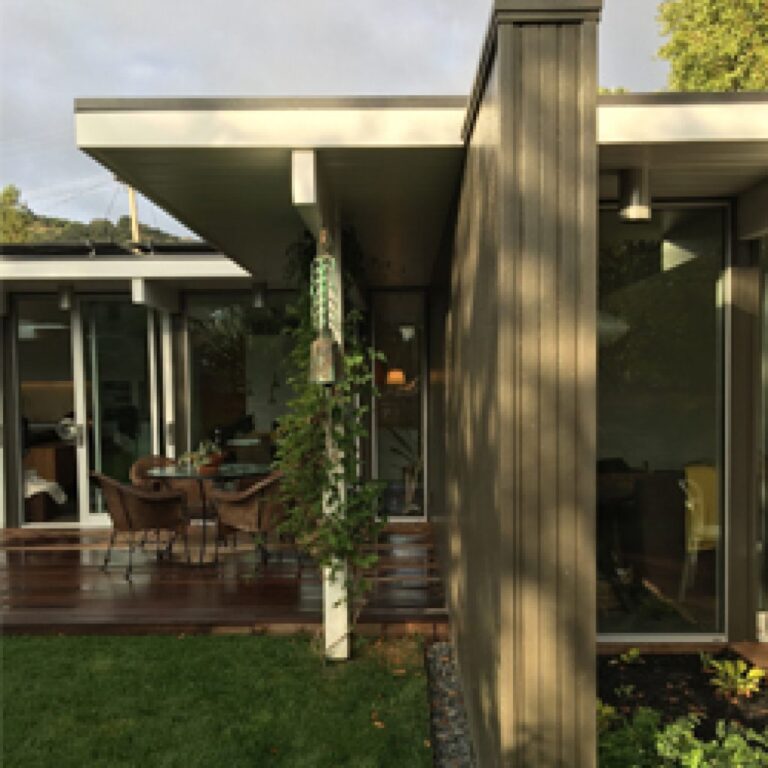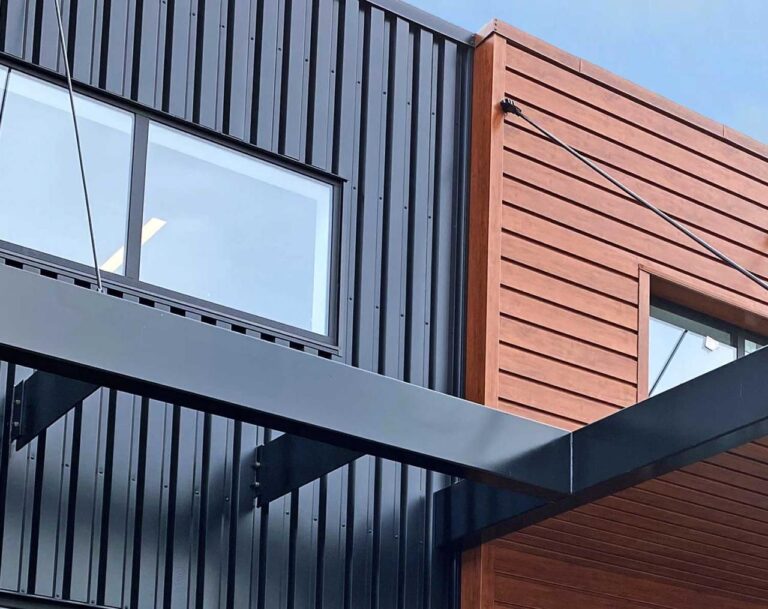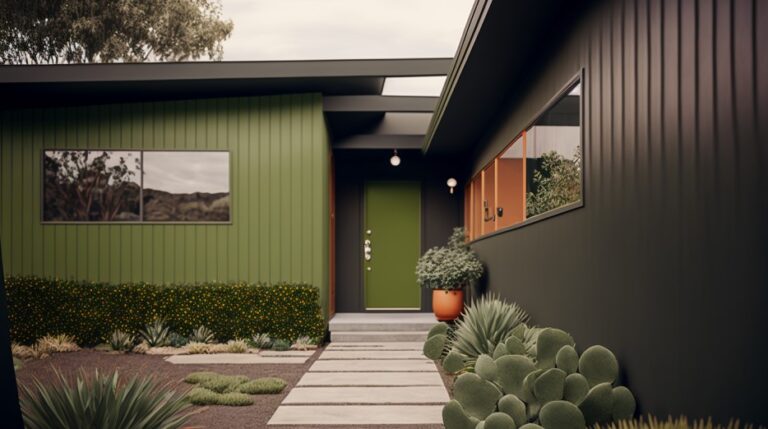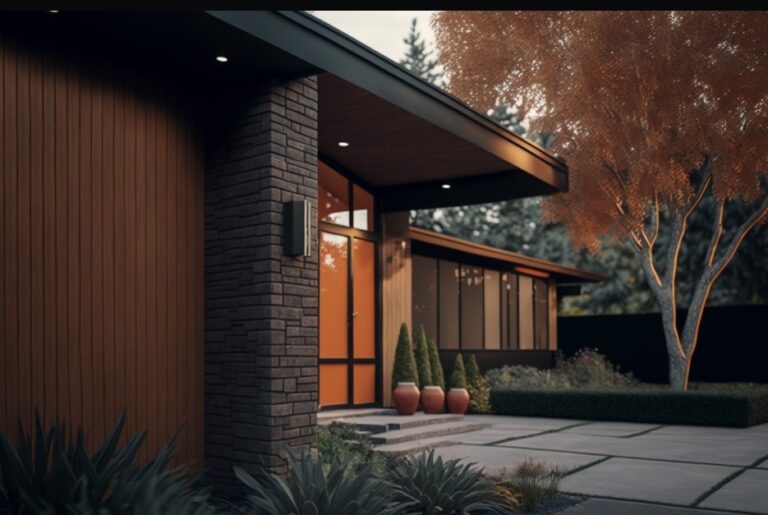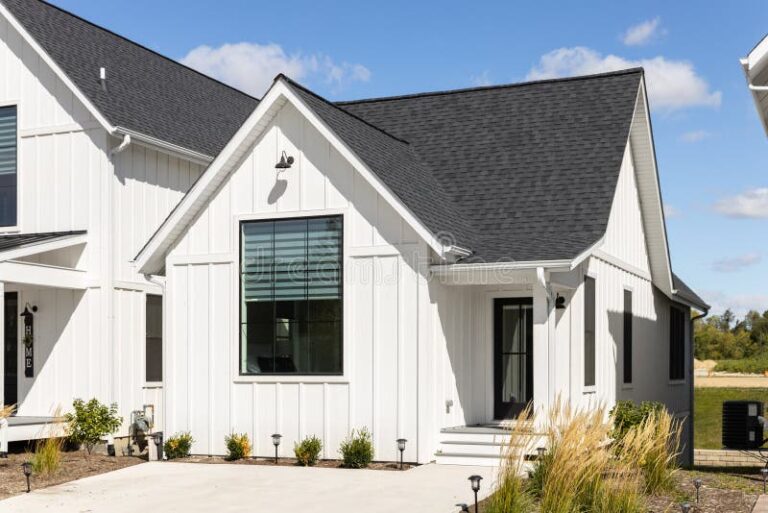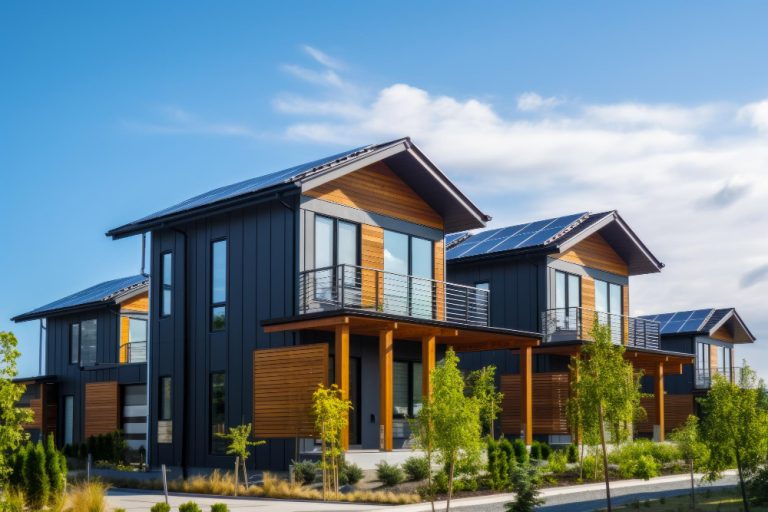Modern Farmhouse Siding Options A Comprehensive Guide
Modern farmhouse siding options offer a diverse range of choices for achieving a unique aesthetic. From classic wood to contemporary metal, this guide explores various materials, styles, and design considerations to help you make informed decisions for your home. Understanding the historical context, popular materials, and installation/maintenance aspects will empower you to select the ideal siding that reflects your vision and budget.
This comprehensive overview will delve into the key characteristics of modern farmhouse style siding, examining popular materials such as wood, fiber cement, vinyl, and metal. It will also discuss siding styles, colors, and textures, along with essential installation and maintenance practices and budget considerations. The ultimate goal is to equip homeowners with the knowledge necessary to choose and implement the perfect siding for their modern farmhouse project.
Introduction to Modern Farmhouse Siding
The modern farmhouse style, a popular choice for residential architecture, blends traditional farmhouse elements with contemporary design sensibilities. This approach often results in homes that are both aesthetically pleasing and functional. A key characteristic of this style is the use of siding, which plays a crucial role in defining the home’s overall appearance and durability. Different siding materials offer various aesthetic options and performance attributes, and the careful selection of siding is critical to achieving the desired modern farmhouse look.
Modern farmhouse siding is distinguished by a combination of clean lines, a focus on natural materials, and a deliberate rejection of overly ornate details. Unlike the often-detailed or rustic siding found in traditional farmhouses, modern farmhouse siding favors simpler profiles and muted color palettes. This juxtaposition of classic and contemporary elements is a defining characteristic of the style. The emphasis is on a straightforward yet refined appearance.
Historical Context and Evolution
The modern farmhouse aesthetic draws inspiration from the traditional farmhouse designs of the past but with a contemporary twist. The evolution of this style reflects the changing preferences of homeowners seeking a blend of timeless charm and modern comfort. Historically, farmhouses were built using readily available materials and simple construction methods. The modern interpretation embraces these roots while integrating modern construction techniques and sustainable materials. The style’s evolution reflects a broader trend toward incorporating traditional elements into contemporary homes, aiming for both visual appeal and functional efficiency.
Modern Farmhouse Home Examples
Numerous examples of modern farmhouse homes showcase diverse siding options. A home in a rural setting might feature a light gray or beige horizontal wood plank siding, reminiscent of classic farmhouses, but with a more refined, modern feel. Another home situated in a more urban environment might utilize a combination of vertical cedar siding and stone accents for a bolder, et grounded, aesthetic. A third home might leverage composite siding, providing a low-maintenance option while maintaining the clean lines of the modern farmhouse style. These examples highlight the flexibility of the modern farmhouse aesthetic and the versatility of various siding materials in achieving the desired look.
Siding Material Comparison
The choice of siding material significantly impacts the appearance and long-term maintenance of a modern farmhouse. This table offers a comparative overview of common siding materials.
| Siding Material | Cost Range | Durability | Maintenance Needs |
|---|---|---|---|
| Wood (e.g., cedar, pine) | Moderate to High | High (with proper treatment) | Moderate (requires regular sealing and repairs) |
| Vinyl | Moderate | High (resistant to rot and pests) | Low (requires occasional cleaning) |
| Composite | High | Very High (resistant to rot, pests, and weather) | Very Low (requires minimal maintenance) |
| Stone Veneer | High | High (durable and long-lasting) | Moderate (requires occasional cleaning and sealing) |
| Fiber Cement | High | Very High (resistant to weather and pests) | Low (requires minimal maintenance) |
Different siding materials provide varying degrees of durability and require different levels of maintenance. Homeowners should carefully consider these factors when selecting siding for their modern farmhouse home. Factors like climate, budget, and desired aesthetic should all be considered in the decision-making process. Ultimately, the best siding material depends on individual needs and preferences.
Popular Siding Materials for Modern Farmhouse Homes: Modern Farmhouse Siding Options
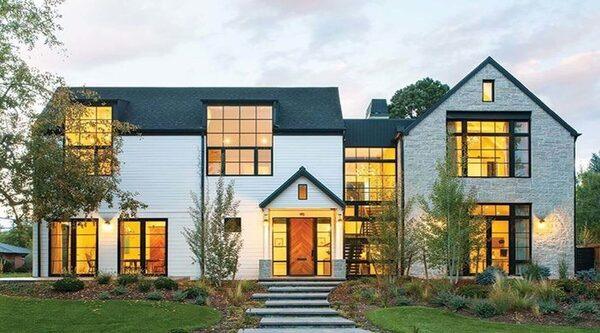
Modern farmhouse designs often prioritize both aesthetic appeal and lasting durability. The choice of siding material plays a crucial role in achieving this balance. Careful consideration of factors like cost, maintenance, and long-term performance is essential when selecting the right material for a modern farmhouse project.
Several siding materials are well-suited for the modern farmhouse aesthetic, each offering a unique combination of pros and cons. Understanding these characteristics allows homeowners to make informed decisions that align with their budgets, lifestyles, and desires.
Common Siding Materials
Modern farmhouse homes frequently utilize a range of siding materials, each with distinct advantages and disadvantages. These materials include wood, fiber cement, vinyl, and metal. Understanding the characteristics of each material is essential for selecting the best option for a specific project.
Wood Siding Options
Wood siding, particularly for modern farmhouse homes, offers a classic and warm aesthetic. However, proper maintenance is crucial for its longevity. Untreated wood siding requires regular sealing and painting to protect it from moisture damage, decay, and insect infestation. This adds to the maintenance load. Treated wood siding, on the other hand, is pressure-treated to resist decay and insects, significantly extending its lifespan. However, the chemical treatments used in pressure-treating can sometimes affect the aesthetic appeal and may not be ideal for all modern farmhouse styles. The choice between treated and untreated wood depends on the homeowner’s priorities regarding maintenance and aesthetic preferences.
Fiber Cement Siding Details
Fiber cement siding is a popular choice for modern farmhouse exteriors due to its durability and low-maintenance nature. It is available in various colors and textures, allowing for a wide range of aesthetic possibilities. The material is resistant to rot, insect damage, and fire, offering significant long-term advantages. Fiber cement siding can also mimic the look of wood siding, providing a classic aesthetic with the benefits of modern durability.
Vinyl Siding Advantages and Disadvantages, Modern farmhouse siding options
Vinyl siding is a cost-effective and low-maintenance option for modern farmhouse exteriors. Its versatility allows for a wide range of colors and styles, enabling homeowners to achieve their desired aesthetic. However, vinyl siding may not have the same level of visual appeal as other materials like wood or fiber cement. Its durability is also sometimes questioned, as extreme temperatures can affect its long-term performance. Vinyl’s susceptibility to damage from impact or weathering needs careful consideration.
Metal Siding Features
Metal siding, including steel and aluminum, is gaining popularity in modern farmhouse designs due to its durability and aesthetic versatility. Steel siding, for example, offers a strong and durable exterior that can withstand harsh weather conditions. Aluminum siding is lighter and often easier to install while still providing a high level of protection. The availability of various colors and finishes allows for a wide range of modern farmhouse aesthetics. However, the initial cost of metal siding can sometimes be higher than other options.
Siding Material Comparison
| Siding Material | Aesthetics | Durability | Cost | Maintenance |
|---|---|---|---|---|
| Wood (Untreated) | Warm, classic | Moderate (requires regular maintenance) | Moderate | High (needs sealing, painting, and repairs) |
| Wood (Treated) | Classic, warm | High (resistant to decay and insects) | Moderate to High | Moderate (less frequent maintenance than untreated) |
| Fiber Cement | Versatile,classicr modern | High (resistant to rot, insects, fire) | High | Low (minimal maintenance) |
| Vinyl | Versatile, many colors | Moderate (susceptible to impact and extreme temperatures) | Low | Low (minimal maintenance) |
| Metal (Steel/Aluminum) | Modern, durable | High (resistant to weather and damage) | Moderate to High | Low (minimal maintenance) |
This table summarizes the key characteristics of different siding materials, aiding in a comparative analysis for selecting the most suitable option for a modern farmhouse home. Factors such as budget, maintenance preferences, and desired aesthetic should be carefully considered during the selection process.
Siding Styles and Design Considerations

Source: boardandbattensiding.net
Modern farmhouse aesthetics often blend classic charm with contemporary sensibilities. Siding plays a crucial role in achieving this balance, influencing the home’s overall character and appeal. Careful consideration of siding styles, colors, textures, and patterns is vital for creating a visually compelling and enduring design.
Choosing the right siding material and style is pivotal in shaping the visual narrative of a modern farmhouse. A well-selected siding solution not only protects the structure but also contributes to the home’s unique personality, reflecting the homeowner’s preferences and the surrounding environment.
Common Siding Styles for Modern Farmhouses
Modern farmhouse aesthetics often incorporate a range of siding styles, from traditional to contemporary. Understanding these styles can help homeowners make informed decisions about the most suitable options for their homes. Key styles include:
- Wood Siding: Classic and warm, wood siding offers a timeless appeal. Various wood species and finishes, including painted or stained options, provide diverse choices for achieving a desired aesthetic. For instance, horizontal lap siding can evoke a classic farmhouse feel, while shiplap siding adds a touch of modern charm.
- Fiber Cement Siding: Known for its durability and low maintenance, fiber cement siding is a popular choice for modern farmhouse designs. Its ability to mimic the look of natural materials, such as wood or stone, makes it an excellent option for achieving a desired aesthetic without compromising on longevity.
- Vinyl Siding: A cost-effective and readily available option, vinyl siding offers a variety of colors and textures. Its maintenance-free properties and resistance to weather elements make it suitable for modern farmhouse homes in diverse climates.
- Stone Veneer Siding: Natural stone veneer provides a luxurious and enduring appeal, offering a traditional feel. Its ability to enhance curb appeal and add a touch of elegance makes it a popular choice for modern farmhouse homes.
Impact of Siding Colors on Appearance
Siding color significantly influences the visual impact of a modern farmhouse. Light colors, such as white, beige, or light gray, create an airy and expansive feel, suitable for homes in open, airy landscapes. Deeper colors, like greys, blues, or muted terracotta, can add depth and character, especially in homes with a more substantial architectural design. Consider the surrounding environment when choosing colors – a vibrant blue siding might be more impactful against a green field than a muted gray against a suburban backdrop.
Importance of Siding Texture and Pattern
Texture and pattern are crucial for adding visual interest and depth to a modern farmhouse facade. Smooth siding can create a minimalist look, while textured siding, such as wood grain or stucco, provides a more substantial and traditional aesthetic. Vertical siding, for example, can create a more stately presence, while horizontal siding can lend a sense of spaciousness. Different siding patterns contribute unique visual elements, enhancing the home’s architectural identity.
Examples of Modern Farmhouse Homes with Different Siding Styles
Numerous modern farmhouse homes showcase the versatility of various siding styles. For example, a home with wood siding might feature horizontal lap siding with light gray paint, offering a classic and warm appearance. Alternatively, a home with fiber cement siding could showcase a vertical panel design in a deep gray, creating a more contemporary look. These variations highlight the range of possibilities available when selecting siding for a modern farmhouse.
Creating Visual Interest and Depth
Siding can be strategically used to create visual interest and depth on a modern farmhouse facade. The interplay of light and shadow, the interplay of textures, and the careful selection of siding patterns and colors can enhance the home’s overall aesthetic. For example, incorporating a combination of siding materials or patterns can add depth and dimension to a facade. This might include a combination of smooth and textured siding or a contrast between light and dark siding.
Integration with Architectural Elements
The integration of siding with other architectural elements, such as windows and rooflines, is critical. The siding’s color, texture, and pattern should complement the architectural design of the windows and rooflines. For instance, siding with a wood-grain texture might be a good choice for a home with traditional-style windows, while smooth siding can be appropriate for a more contemporary aesthetic. Careful consideration of these elements ensures a harmonious and cohesive design.
Siding Patterns and Visual Appeal
| Siding Pattern | Visual Effect |
|---|---|
| Horizontal Lap | Creates a sense of spaciousness and a classic look. |
| Vertical Board and Batten | Adds a touch of elegance and a more substantial presence. |
| Shiplap | Creates a modern and rustic aesthetic. |
| Stone Veneer | Provides a luxurious and enduring appeal. |
Installation and Maintenance of Modern Farmhouse Siding

Source: trulogsiding.com
Modern farmhouse siding, with its diverse materials and styles, requires careful installation and ongoing maintenance to preserve its aesthetic appeal and longevity. Proper techniques ensure a strong, weather-resistant structure, while regular upkeep prevents costly repairs down the road. This section delves into the intricacies of installation and maintenance, highlighting critical considerations for each step.
Effective installation and diligent maintenance are paramount to the long-term success of a modern farmhouse siding project. Addressing issues proactively, like proper ventilation and drainage, safeguards the structural integrity and enhances the longevity of the siding, protecting the investment in the home.
Siding Installation Process
Careful preparation is the foundation of a successful siding installation. This includes inspecting the existing structure for any damage or rot, ensuring proper support for the new siding, and marking the installation points for accuracy. Precise measurements and consistent spacing are vital for achieving a professional finish. High-quality fasteners and appropriate adhesives are critical for long-term stability. Application methods vary depending on the specific siding material but generally involve securing panels to the framing using specialized tools and techniques. Finishing touches, such as caulking and trim work, complete the installation process, creating a seamless and aesthetically pleasing result.
Maintenance Strategies for Longevity
Regular maintenance is key to extending the lifespan of modern farmhouse siding. A consistent schedule, tailored to the specific material, is crucial. This involves routine inspections for any signs of damage, such as cracks, gaps, or discoloration. Promptly addressing minor issues prevents them from escalating into major problems.
Importance of Ventilation and Drainage
Proper ventilation and drainage are vital for preventing moisture damage. Adequate ventilation allows air to circulate behind the siding, preventing moisture buildup and rot. Proper drainage systems divert water away from the foundation and siding, reducing the risk of water damage. Inspecting and maintaining gutters and downspouts are crucial components of this preventative strategy.
Different Installation Methods for Various Siding Types
Installation methods vary significantly depending on the siding material. For example, fiber cement siding typically involves nailing or screwing panels directly to the framing, while vinyl siding often utilizes specialized clips and channels. The manufacturer’s instructions should always be followed precisely. Each material has unique considerations in terms of fastening, spacing, and overlapping to ensure optimal performance.
Siding Lifespan and Maintenance Schedules
The lifespan and maintenance requirements of siding materials vary greatly.
| Siding Material | Typical Lifespan (Years) | Maintenance Schedule |
|---|---|---|
| Vinyl | 20-30 | Annual inspection for damage, cleaning, and aulking as needed. |
| Fiber Cement | 50+ | Annual inspection for damage, cleaning, and caulking as needed. |
| Wood | 15-25 | Annual inspection for rot, staining, and sealing as needed. |
| Metal | 25-50+ | Annual inspection for dents, rust, and cleaning. |
Importance of Qualified Contractors
Using qualified contractors for both installation and maintenance is crucial for achieving optimal results. Contractors with experience in modern farmhouse siding installations possess the expertise to ensure proper installation and adherence to building codes. They also understand the unique maintenance needs of various siding materials, offering guidance on appropriate techniques. This expertise minimizes potential issues and maximizes the lifespan of the siding.
Potential Issues and Resolutions
Potential issues during installation and maintenance can include improper installation, inadequate ventilation, or improper drainage. Promptly addressing these issues is vital to avoid extensive damage. Examples include fixing gaps in siding, addressing moisture buildup, and repairing damaged areas. Professional advice and guidance should be sought for complex or recurring problems. Always consult with qualified contractors for proper solutions and to prevent further damage.
Budget Considerations for Modern Farmhouse Siding
Budgeting for modern farmhouse siding projects involves careful consideration of material costs, installation labor, and potential contingencies. Proper planning is crucial to avoid unexpected expenses and ensure a successful project within a defined budget. Understanding the factors that influence siding cost and how to create a realistic budget are key components in achieving the desired aesthetic without overspending.
The cost of modern farmhouse siding can vary significantly based on the chosen material, the complexity of the design, and the location of the project. Different materials, from traditional wood to more contemporary options like fiber cement, have varying price points. Installation labor rates also play a substantial role, fluctuating depending on local market conditions and the specific requirements of the project. A comprehensive budget should account for these variables to avoid any surprises during the project.
Material Cost Ranges
Various siding materials come with distinct price ranges. Wood siding, often a popular choice for its classic farmhouse aesthetic, can vary in cost depending on the species of wood, the quality of the finish, and the complexity of the design. Fiber cement siding, known for its durability and low maintenance, generally falls in a mid-range price category. Vinyl siding, a more budget-friendly option, provides a wide array of colors and styles but may not offer the same level of longevity as other materials. Stone veneer, often desired for its upscale appearance, tends to be the most expensive option, with costs influenced by the type of stone and the size of the project.
Installation Labor Costs
Installation labor costs are another significant component of the overall budget. Labor rates depend on several factors, including local market conditions, the experience level of the contractors, and the complexity of the installation. For example, a simple installation of vinyl siding might require fewer hours compared to a more intricate installation of custom-designed wood siding, thus affecting the labor costs. It’s crucial to obtain multiple quotes from qualified contractors to get a realistic understanding of potential installation expenses.
Factors Influencing Siding Costs
Material availability, fluctuating material prices, and geographic location all impact the cost of siding. Supply chain issues, especially during periods of high demand, can lead to price increases. Similarly, regions with higher labor costs will typically have higher installation expenses. Additionally, the complexity of the project, such as intricate architectural details or unusual siding configurations, will inevitably increase labor and material costs.
Creating a Realistic Budget
Developing a realistic budget requires a thorough assessment of the project’s scope. Detailed measurements of the home’s exterior, a precise material list, and detailed labor estimates are critical. It is highly recommended to consult with a professional contractor to develop a comprehensive estimate that includes all necessary materials, labor, and potential contingencies. Obtain multiple quotes from reputable contractors to compare prices and services. It’s important to factor in the cost of permits, any necessary site preparation, and potential extra costs related to unexpected issues.
Budget Options for a Modern Farmhouse Look
Achieving a modern farmhouse look on a budget can be accomplished through strategic material selection. For example, consider vinyl siding in a timeless color palette paired with a high-quality paint job. This can deliver a modern farmhouse aesthetic without exceeding a predefined budget. Another approach is to use fiber cement siding, known for its durability and resistance to weathering, which may fall within a mid-range price point. The choice of siding style and architectural features can significantly influence the final budget. Remember that high-end finishes or intricate details will typically increase the project cost.
Cost Comparison Table
| Siding Material | Approximate Cost (per square foot) | Installation Cost (per square foot) | Total Estimated Cost (per square foot) |
|---|---|---|---|
| Vinyl | $5-$15 | $5-$10 | $10-$25 |
| Fiber Cement | $10-$25 | $7-$12 | $17-$37 |
| Wood | $15-$40 | $8-$15 | $23-$55 |
| Stone Veneer | $25-$75 | $10-$20 | $35-$95 |
Note: Costs are approximate and may vary based on location, material quality, and installation complexity.
Modern Farmhouse Siding Inspiration and Trends
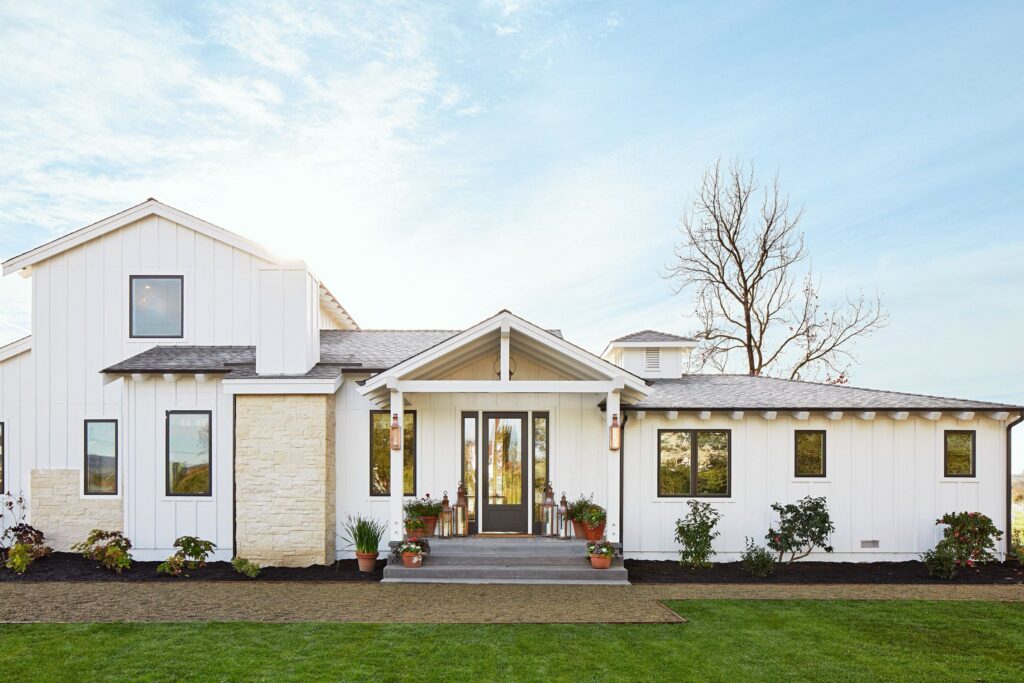
Modern farmhouse design, known for its blend of rustic charm and contemporary aesthetics, offers a wide spectrum of siding options. This section explores inspiring examples and current trends, highlighting how homeowners can leverage various materials and styles to create unique and enduring homes. The evolving palette of colors, textures, and materials, coupled with sustainable choices, will further personalize and enhance the modern farmhouse aesthetic.
Examples of Stunning Siding Installations
Modern farmhouse homes often showcase a diverse range of siding installations, reflecting the style’s adaptability. Homes featuring horizontal cedar siding with a natural finish can evoke a warm and inviting ambiance, while homes with a mix of stone and wood panels offer a striking visual contrast. Consider a house with vertical shiplap siding painted in a soft gray tone; this creates a clean and sophisticated look. Another example could be a home with reclaimed wood siding, adding a rustic touch with unique textures and tones. These diverse examples demonstrate how siding can be a key element in achieving a truly unique modern farmhouse style.
Current Trends in Modern Farmhouse Siding
Current trends in modern farmhouse siding are marked by a focus on both classic and innovative materials. Warm, neutral colors like beige, gray, a nd light gray remain popular choices, providing a backdrop for various architectural details. However, bold exterior colors like deep blues, rich greens, and even vibrant terracotta are also gaining traction. The use of textured siding, such as stucco or stone veneers, is gaining popularity for its ability to add visual interest and depth. Furthermore, metal siding, particularly in copper or zinc, is becoming a popular choice, offering both a unique aesthetic and durability.
Inspirational Images of Modern Farmhouse Homes
Visual inspiration is crucial for understanding the potential of modern farmhouse siding. Imagine a home with a mix of weathered wood planks and dark gray metal siding, offering a modern twist on traditional farmhouse elements. Another example could be a home with horizontal cedar planks in a light beige tone accented by black metal trim, demonstrating a clean and minimalist approach. A home featuring stucco siding with vertical lines and a light gray color palette can create a sophisticated and modern feel. These visual examples highlight the versatility of siding materials and colors in modern farmhouse design.
Evolution of Siding Styles in Modern Farmhouse Design
The evolution of siding styles in modern farmhouse design demonstrates a shift from primarily natural wood and stone to a broader range of options. The transition reflects a move towards both aesthetic diversity and practical considerations, such as durability and maintenance. Early examples often showcased traditional wood siding in natural colors, progressing to a greater variety of materials and finishes.
| Era | Siding Styles | Characteristics |
|---|---|---|
| Early 2000s | Wood siding, stone | Natural, traditional |
| 2010s | Wood siding, stone, stucco, fiber cement | Growing variety, improved durability |
| Present | Wood siding, stone, stucco, fiber cement, metal, composite | Diverse materials, modern aesthetics, sustainable choices |
Incorporating Sustainable Materials
Sustainable materials are becoming increasingly important in modern farmhouse design. Homes can incorporate reclaimed wood, which adds character and reduces environmental impact. Fiber cement siding is a good option, as it’s durable and often made with recycled materials. Consider using locally sourced materials whenever possible to minimize transportation costs and carbon footprint. Another option involves using siding made from recycled content, which minimizes the environmental impact. By selecting sustainable materials, homeowners can contribute to a more environmentally friendly approach to construction.
Ending Remarks
In conclusion, modern farmhouse siding presents a wealth of options to create a captivating facade. From the historical roots of the style to the latest trends, this guide has explored the diverse materials, styles, and design considerations. By understanding the cost, durability, and maintenance aspects, homeowners can confidently select the perfect siding for their dream modern farmhouse. Remember to prioritize a professional installation and ongoing maintenance to ensure the longevity and beauty of your chosen siding.
